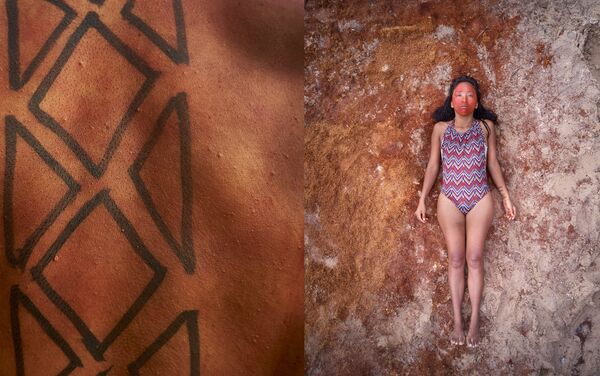El uruguayo Pablo Albarenga fue elegido fotógrafo del año y además ganó en la categoría Latin America Professional Award, incluída por primera vez este año en los premios Sony para reconocer el trabajo fotográfico en América Latina.
"Fue una sorpresa muy grande, algo que no esperaba. Creo que es muy bueno para Latinoamérica porque es un continente que históricamente ha sido narrado por miradas extranjeras, a través del exotismo y la miseria. Ojalá cada vez más narradores audiovisuales y fotógrafos latinoamericanos se animen a contar nuestras historias", dijo Albarenga.



La serie del proyecto Semillas de la Resistencia está compuesta por imágenes cenitales y divididas a la mitad: en una parte se muestra a los nativos acostados sobre la tierra y en la otra al territorio que están defendiendo. Ambos están a la misma altura para reflejar el tipo de vínculo que mantienen.
"Lo fotográfico es la menor parte del proceso, es más que nada una excusa para poder contar estas historias. La parte más rica de mi trabajo tiene que ver con ese encuentro que se da entre las personas y en el cual, sin dudas, el que más aprende soy yo", añadió el fotógrafo uruguayo de 30 años.
"Estamos hablando de comunidades que están siendo completamente saqueadas, empobrecidas, amenazadas, violentadas. Cuando uno está en la comunidad todos esos intereses de ellos se vuelven intereses en común y aparecen reflejados en el trabajo. La colección pretende ilustrar aunque sea una pequeña parte de esa resistencia en la Amazonía", concluyó.
Esto y más en Zona Violeta.




